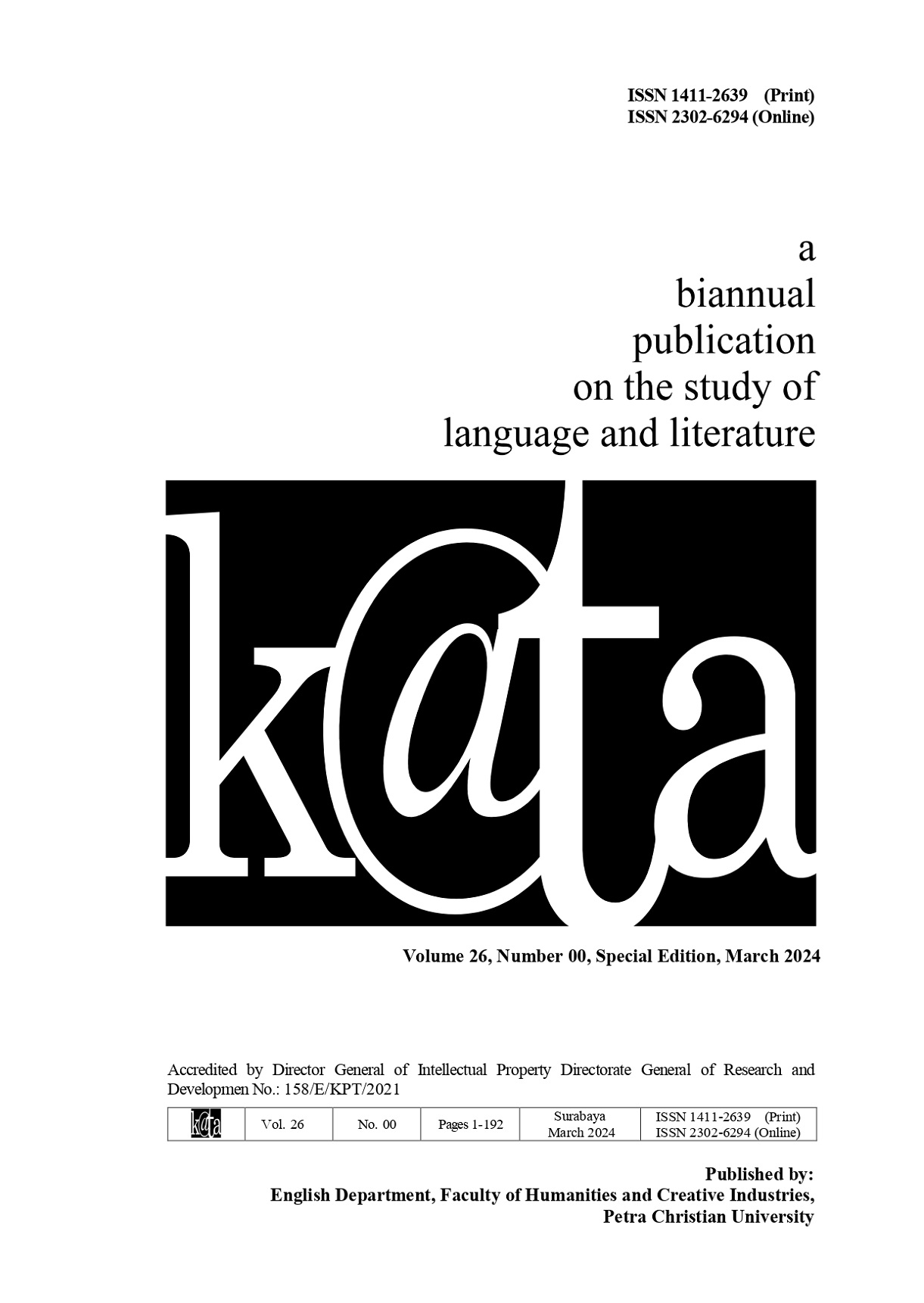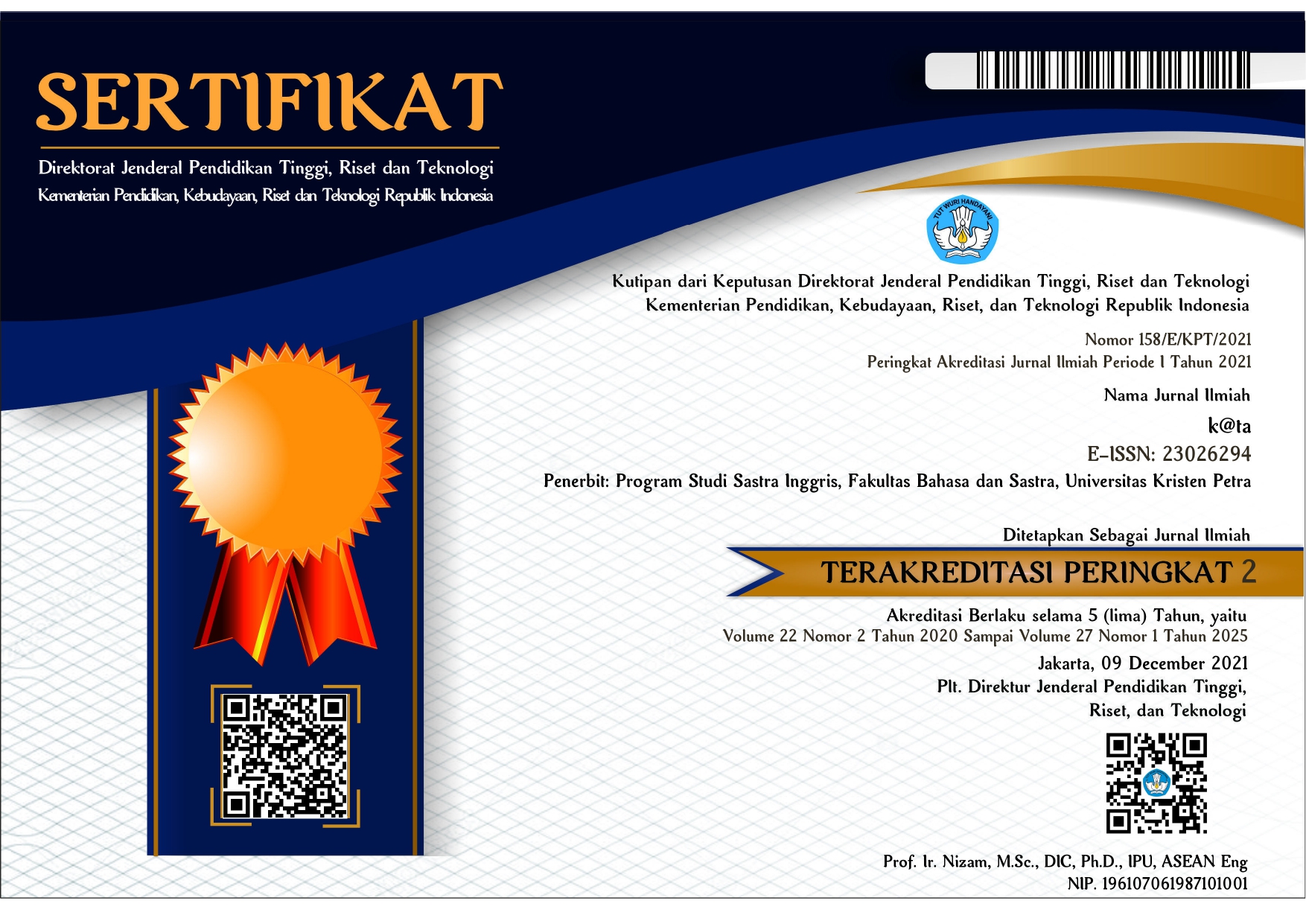Starting from an Empty Plate: A Semiotic Study of Instant Noodle Advertisements during the Fasting Month of Ramadan in the Covid-19 Pandemic
Abstract
From the beginning of the Covid-19 pandemic in 2020 until 2022, Indomie has consistently issued advertisements during the fasting month of Ramadan. During this period, it is a challenge for food manufacturers to promote their products. In the case of Indomie’s advertisement, which started with an idea that visually displays an empty plate and is broadcast during the fasting month, is quite viral because it dares to advertise without displaying the products it sells. Interestingly, Indomie is still holding up empty plates for their advertisement in 2021. The continuity of the story that started with empty plates is what prompted me to continue the analysis of Indomie instant noodle ads that were aired during the fasting months of Ramadan during the pandemic in 2020, 2021, and 2022. The purpose of this research is to reveal the meaning and ideology of what is to be conveyed through these ads. Rolland Barthes' semiotic analysis method is considered suitable to analyze the mythology and ideology behind them. The presence of an empty plate shows the meaning of tolerance for fasting Muslims. Each advertisement describes this form of tolerance differently. Even though it is covered by religious, social, cultural, and economic discourses, the ideology of capitalism is still sensed in all the advertisements that are displayed.
Downloads
References
Barthes, R. (1972). Mythologies. Hill & Wang.
Barthes, R. (1986). Element of semiology. Hill & Wang.
Barthes, R. (1993). Image, music, text. Fontana Press.
Bramantyo, R. (2020, 27 April). Indomie "Piring Kosong" versi puasa [Indomie “empty plate†Ramadan fasting version]. Youtube. Retrieved on 18 January 2022 at https://www.youtube.com/watch?v=2Cp7cr7XrFM
Chan, H. (2022, 5 April). Indomie 50 tahun, cerita sederhana penuh arti, TVC edisi Ramadhan 2022, iklan Indonesia 15 sec [50 years of Indomie, a simple story full of meaning, TVC Ramadhan 2022 edition, Indonesian 15 sec advertisement]. Retrieved on 20 April 2022 at https://www.youtube.com/watch?v=qJLIZ22WiN8
Chandler, D. (2007). Semiotics: The basics (2nd edition). Routledge.
Daniel, A. (2020). Iklan viral Indomie edisi Ramadan, begini cara masak mie gak pakai mie [Viral Indomie Ramadan edition, here is how to make noodles without noodles]. Retrieved on 15 February 2022 at
https://sumut.idntimes.com/hype/viral/aditya-daniel/iklan-viral-indomie-edisi-ramadan-begini-cara-masak-mie-gak-pakai-mie/3
Emeria, D. C. (2022). RI jadi raja mi instan di dunia, begini ceritanya [RI becomes the kind of instant noodles in the world, here is how it began]. CNBC Indonesia. Retrieved on 14 February 2022 at
https://www.cnbcindonesia.com/news/20220125060444-4-310096/ri-jadi-raja-mi-instan-di-dunia-begini-ceritanya.
Indomie. (2021, 13 April). Yuk, jalanin niat baik! [Let’s do good things!]. Youtube. Retrieved on 18 January 2022 at https://www. youtube. com/ watch?v=C_UNYVBN3Jk.
Jakartanotebook.com. (2020). Filosofi 8 makanan ulang tahun dari berbagai negara [8 philosophies for birthday food in various countries]. Retrieved on 20 February 2022 at https://www.jakartanotebook.com/blog/makna-makanan-ulang-tahun-dari-berbagai-negara/
Kastolani. (2022). Bulan Ramadhan adalah bulan diwajibkannya puasa, penuh ampunan dan rahmat Allah [Ramadhan is the month of fasting, forgiveness and God’s grace]. INews. Retrieved on 5 April 2022 at
https://www.inews.id/lifestyle/muslim/bulan-ramadhan-adalah
Lestari, T. (2021). Viral kemasan Indomie piring kosong edisi Ramadan [Indomie viral packaging with empty plates for Ramadan]. Retrieved on 15 February 2022 at https://www.tagar.id/viral-kemasan-indomie-piring-kosong-edisi-ramadan
Maulana, T. (2020). Pengertian sahur: Dalil, hukum, doa, dan waktu [Definition of sahur: Evidence, law, prayer, and time]. Retrieved on 6 April 2022 at https://umroh.com/blog/pengertian-sahur-dalil-hukum-doa-dan-waktu/
Megawati, A. (2016). Begini asal usul baju koko yang sering dipakai pria Muslim [This is the origin of the koko shirt that is often worn by Muslim men]. Retrieved on 6 April 2022 at https://www.merdeka.com/peristiwa/begini-asal-usul-baju-koko-yang-sering-dipakai-pria-muslim.html
Natadjaja, L., & Setyawan, P. B. (2018). The construction of meaning in instant noodle advertisements. Language in the online & offline world 6: The fortitude. English Department Petra Christian University.
Natadjaja, L., & Setyawan, P. B. (2021). Refleksi kultural dalam iklan Indomie spesial Ramadhan 2020 [Cultural reflection in Indomie’s special Ramadhan 2020 ad]. Semiotika: Jurnal Komuni¬kasi, 15(1), 37-48.
Procter, J. (2004). Stuart hall. Routledge.
Rahmawati, A. (2021). Wow! Indonesia negara pemakan mie instan terbanyak ke-2 di dunia [Wow! Indonesia is the 2nd biggest instant noodle eater in the world]. Detik. Retrieved on 14 February 2022 at https://food.detik.com/info-kuliner/d-5678459/wow-indonesia-negara-pemakan-mie-instan -terbanyak-ke-2-di-dunia
Shabbir, M. Q., Khan, A. A., & Khan, A. R. (2017). Brand loyalty, brand image, and brand equity: The mediating role of brand awareness. International Journal of Innovation and Applied Studies, 19(2), 416-423.
Suhendra. (2016). Mi instan, gurih pasarnya sengit persaingannya [Instant noodles, the savory market and its spicy competition]. Tirto. Retrieved on 15 February 2022 at https://tirto.id/mi-instan-gurih-pasarnya-sengit-persaingannya-yeZ.

This work is licensed under a Creative Commons Attribution 4.0 International License.
![]() This work is licensed under a Creative Commons Attribution License
This work is licensed under a Creative Commons Attribution License




.png)
.png)

.png)












